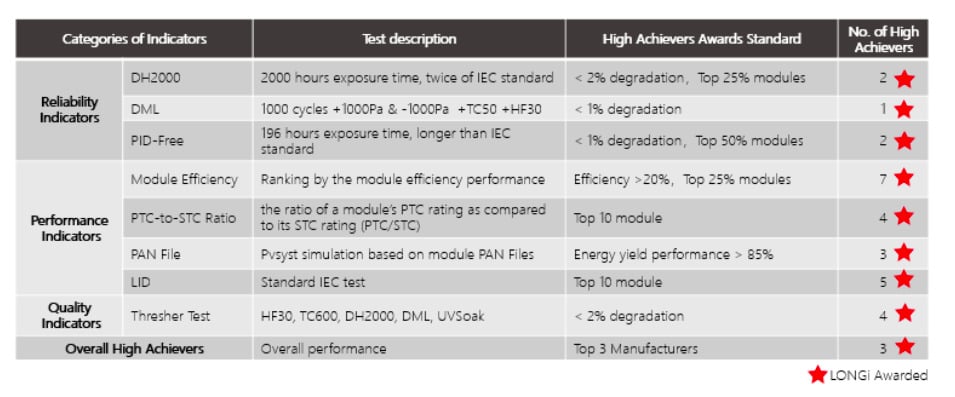The US Renewable Energy Testing Center (RETC) has released its “Photovoltaic Module Index Report” (PVMI) for 2020. Having won a “High Achievers” award in 2019, LONGi has once again carried off the award for outstanding performance following RETC’s comprehensive evaluation of global photovoltaic modules.
LONGi’s performance in three indicators of reliability, performance and quality identified it as one of only three companies to achieve the award. The company also became the only module manufacturer to perform well in all 8 individual tests, underlining the high reliability and excellent performance of its monocrystalline modules.

The PVMI provides a high-level overview of relevant tests carried out by RETC within reliability, performance and quality indicators, followed by a sampling of test data to recognize high performers and showcase high achievement in manufacturing.
To characterize reliability, the report presents performance distribution data based on a series of tests, including DH2000, HF30, TC600, DML, UV and PID196h. For the performance category, it presents data characterizing module conversion efficiency, PVUSA Test Conditions (PTC) ratings*, Pvsyst simulation (PAN file) and LID. In regards to quality indicators, the results of Thresher Test qualification protocols are listed, exceeding minimum requirements.
*PVUSA Test Conditions (PTC): An elevated cell temperature of 45°C, an ambient temperature of 22°C, and a wind speed of 1 meter per second
*PTC rating is related to a module’s temperature coefficient of power, its nominal operating cell temperature (NOCT) and aperture area.


LONGi is committed to product reliability, from design to production. Module design starts with theoretical simulation using relevant optical, electrical and mechanical models. Module power, efficiency, energy yield and reliability will all be considered before design is finalized; For module BOM selection, the company has always maintained a highly cautious approach, ensuring long-term product reliability. In addition, LONGi uses Ga doping to control mono PERC module LID, and has also optimized the hydrogen passivation process to mitigate LeTID.


